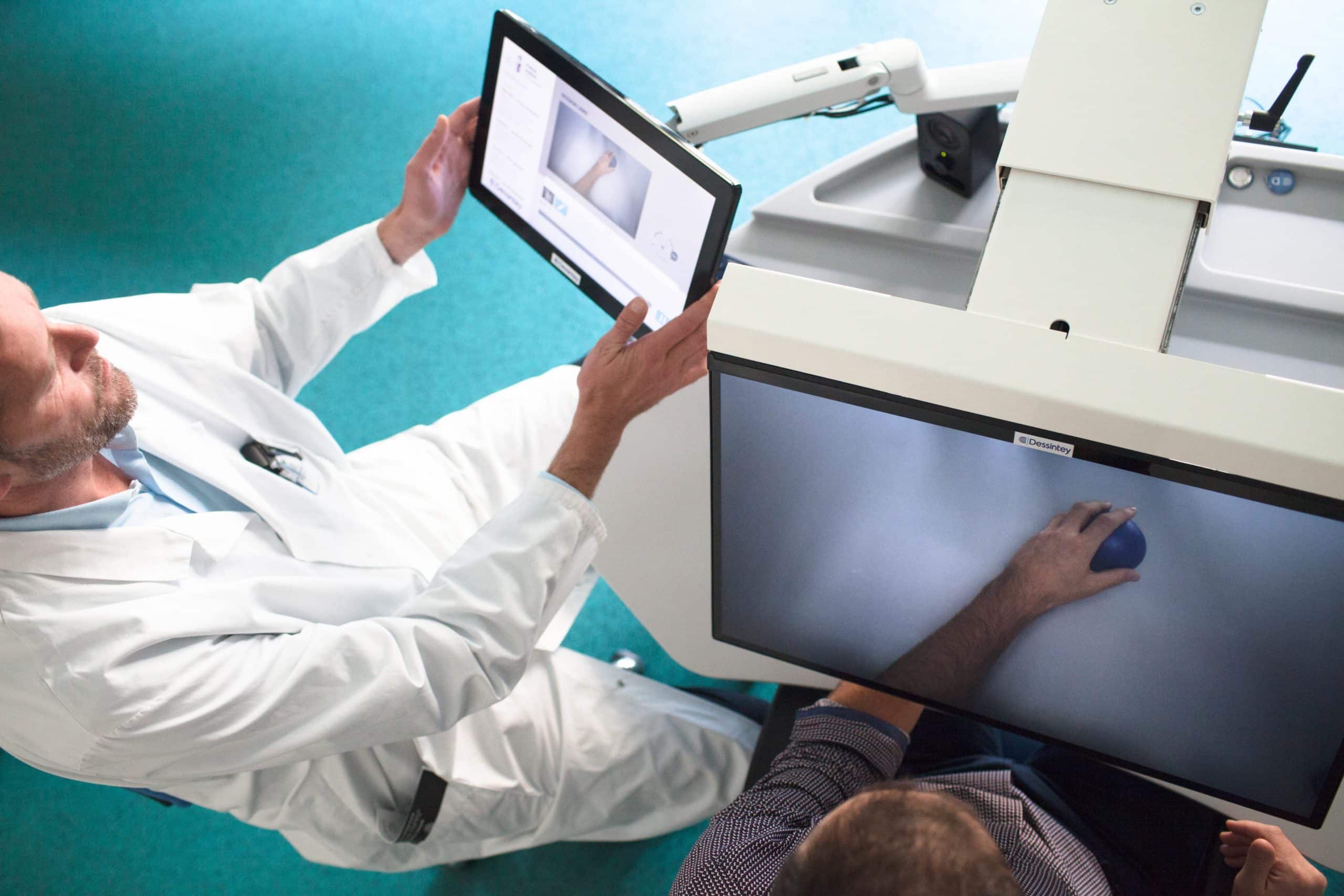Dessintey was established in 2017, the technologies developed by it are the result of work carried out by Professor Pascal Giraux, Head of the Adult Rehabilitation Department at the Saint-Etienne University Hospital. He had been interested in post-stroke motor rehabilitation for a long time, in particular mirror therapy. This technology was developed around 1995, in the USA. It consists in creating for a stroke patient the illusion that their injured limb is still working, by putting a mirror opposite their valid limb, in order to stimulate the plasticity of the brain. This rehabilitation technique has been recommended by the HAS (the French Haute Autorité de Santé), since 2012.
“At Dessintey, we have computerized this system in order to make it accessible to as many people as possible,” explained Nicolas Fournier, CEO of Dessintey. The mirror has therefore been replaced by a screen, linked to a camera and software. It sends the patient the image, or rather the illusion, that their paralyzed limb is moving, which requires less concentration on their part than actual mirror therapy. “Patients focus on this display and proactively participate in the process. They try to move their paralyzed limb. The device sends them a positive image, which promotes brain plasticity through learning. Thus creating a virtuous circle!” Nicolas Fournier added.
“Before our devices, only 10% to 20% of stroke rehabilitation patients had access to mirror therapy. Today this figure is 90%. Our devices give rise to a very powerful feeling of immersion and illusion for stroke patients, which promotes their rehabilitation,” Nicolas Fournier, CEO of Dessintey.
After a stroke, the brain can no longer send orders to one of its limbs, it is not the limb that is non-functional. There is therefore a need to relearn how to plan movement, in addition to other rehabilitation techniques. But if a patient tries a number of times and fails, they are discouraged and give up. By sending them a positive image, these devices offer motivation and increase the patient’s chances of recovery.
Dessintey launched its first product for upper limbs, the IVS3, in mid-2018. It has just launched its second device, the IVS4, for lower limbs, in September 2022. These rehabilitation devices dedicated to the control and planning of movement make demands on the injured hemisphere of the brain, the area affected by the stroke. Patients are on average treated for between 4 and 6 weeks, with one or two sessions of 20 minutes a day. A database of 800 varied and customized exercises is made available to them.
Today, over 100 hospitals in France use these solutions, with the “absolute commitment of therapists and the scientific community,”Nicolas Fournier was pleased to add. Dessintey also has a subsidiary in Germany. Its products are distributed in around fifteen countries in Europe.
Dessintey finished 2021 with a growth rate of 150%, and this is expected to exceed 60% this year, 2022. The company has, moreover, just moved into a bigger production site, also in Saint-Etienne. It manufactures and assembles all its machines on this 750 sq m site.
The USA, which is the birthplace of mirror therapy, is particularly interested in these solutions. In a country where there are over 500,000 strokes every year, rehabilitation centers are investing increasing amounts in effective and reliable tools like those produced by Dessintey. As a winner of the Next French Healthcare Program, Dessintey is carefully preparing its future presence in the United States, which is expected to happen in the course of the next 12 to 24 months. Its directors travel there on a regular basis. Around a dozen establishments have had the opportunity of testing their solutions, and have reacted positively.



